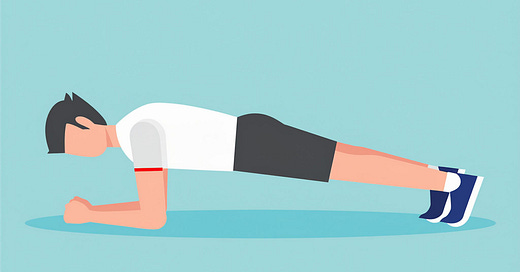Functional Patterns
TLDR - Functional Patterns (FP) use natural movement patterns to correct and prevent biomechanical dysfunctions. This is the most upstream way to maintain healthy structure in your body.
Correcting Biomechanical Dysfunctions
Functional Patterns is designed to address and correct biomechanical dysfunctions that often result from modern lifestyles, such as prolonged sitting, poor posture, and repetitive movements. These dysfunctions can lead to chronic pain, reduced mobility, and an increased risk of injury. FP exercises aim to realign the skeletal structure, ensuring that joints, muscles, and connective tissues work together harmoniously. By targeting the root causes of these dysfunctions, FP helps to restore the body's natural alignment and functionality.
Natural Movement Patterns
One of the core principles of Functional Patterns is the emphasis on natural movement patterns. Unlike traditional exercise routines that often focus on isolated muscle groups or unnatural movements, FP prioritizes movements that mimic real life activities. By training the body to move as it was naturally designed to, FP helps to improve coordination, balance, and overall efficiency.
Other Exercise Forms
While other types of exercises, such as Pilates, yoga, and strength training, can also help improve structure and flexibility, they often do not focus on natural movement patterns. Many traditional exercise routines emphasize isolated muscle groups or repetitive movements that can put the body out of homeostasis. This can lead to imbalances, increased risk of injury, and reduced overall efficiency.
Chiropractic Adjustments
Chiropractic adjustments can be highly effective in realigning the skeletal structure and alleviating pain. However, they often address the symptoms rather than the foundational issues. Functional Patterns movements focus on correcting the underlying biomechanical dysfunctions that lead to misalignment and pain. By incorporating FP exercises into your daily routine, you can address these foundational issues and reduce the need for frequent chiropractic care. This proactive approach ensures that your body remains aligned and functional, promoting long term health and reducing the likelihood of recurring issues.
Hydration and Fascia
It's essential to remember the critical role of hydration and the fascia in our overall health. Fascia, the connective tissue network that envelops and interconnects every muscle, organ, and cell in our body, acts as a superhighway for the flow of electrons and information. Proper hydration is important for maintaining the elasticity and functionality of this fascial network, ensuring that it can efficiently transmit signals and energy throughout the body. Functional Patterns movements not only help to realign and hydrate the fascia but also support this intricate communication system, effectively boosting your "body battery."
Piezoelectricity
Functional Patterns movements also generates piezoelectricity, a form of electron creation. When we move, the mechanical stress and pressure applied to our connective tissues, such as fascia, bones, and muscles, generate electrical charges. This phenomenon, known as piezoelectricity, helps to create free electrons that can be utilized by our cells for various metabolic processes. These electrons are crucial for maintaining cellular health, supporting mitochondrial function, and enhancing overall energy levels. Functional Patterns movement not only optimizes your biomechanical function but also boosts your body's energy production.
Downstream Practices
Chiropractic Adjustment: These will always be beneficial and needed for tune ups, but the goal is to be as preventative as possible.



